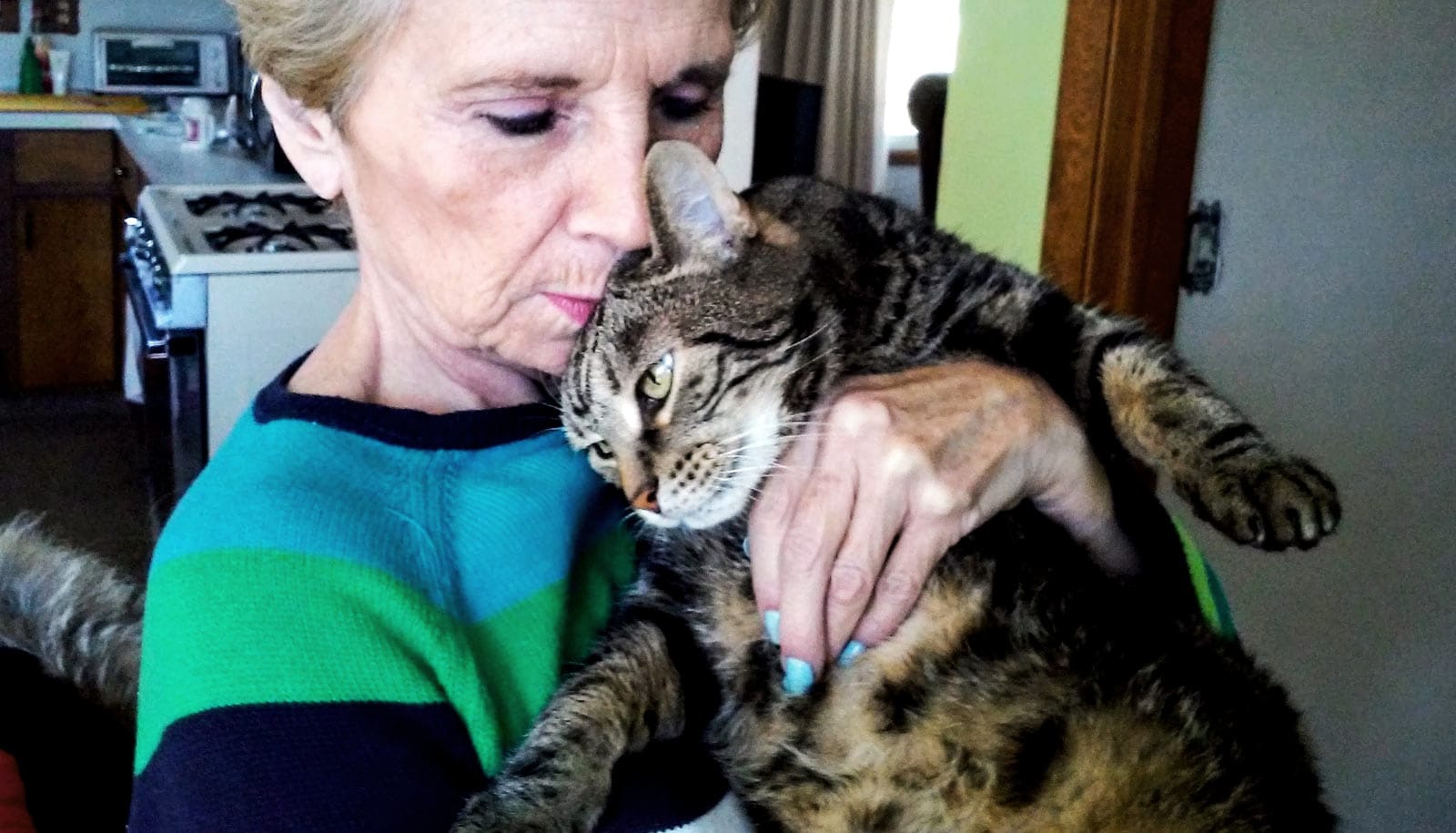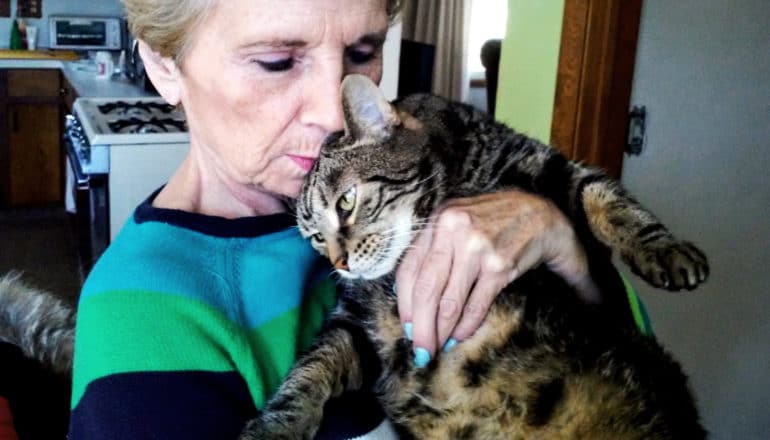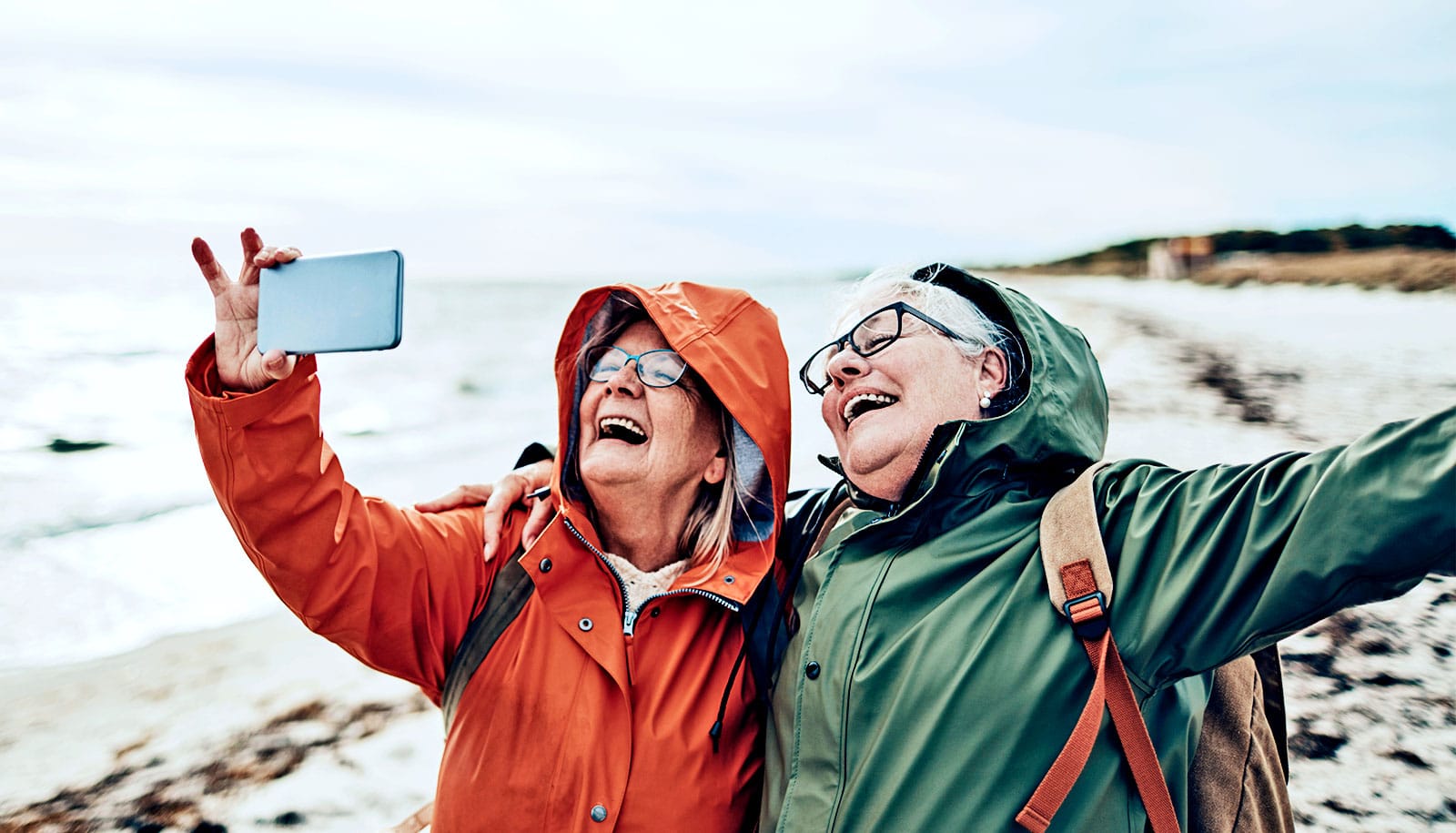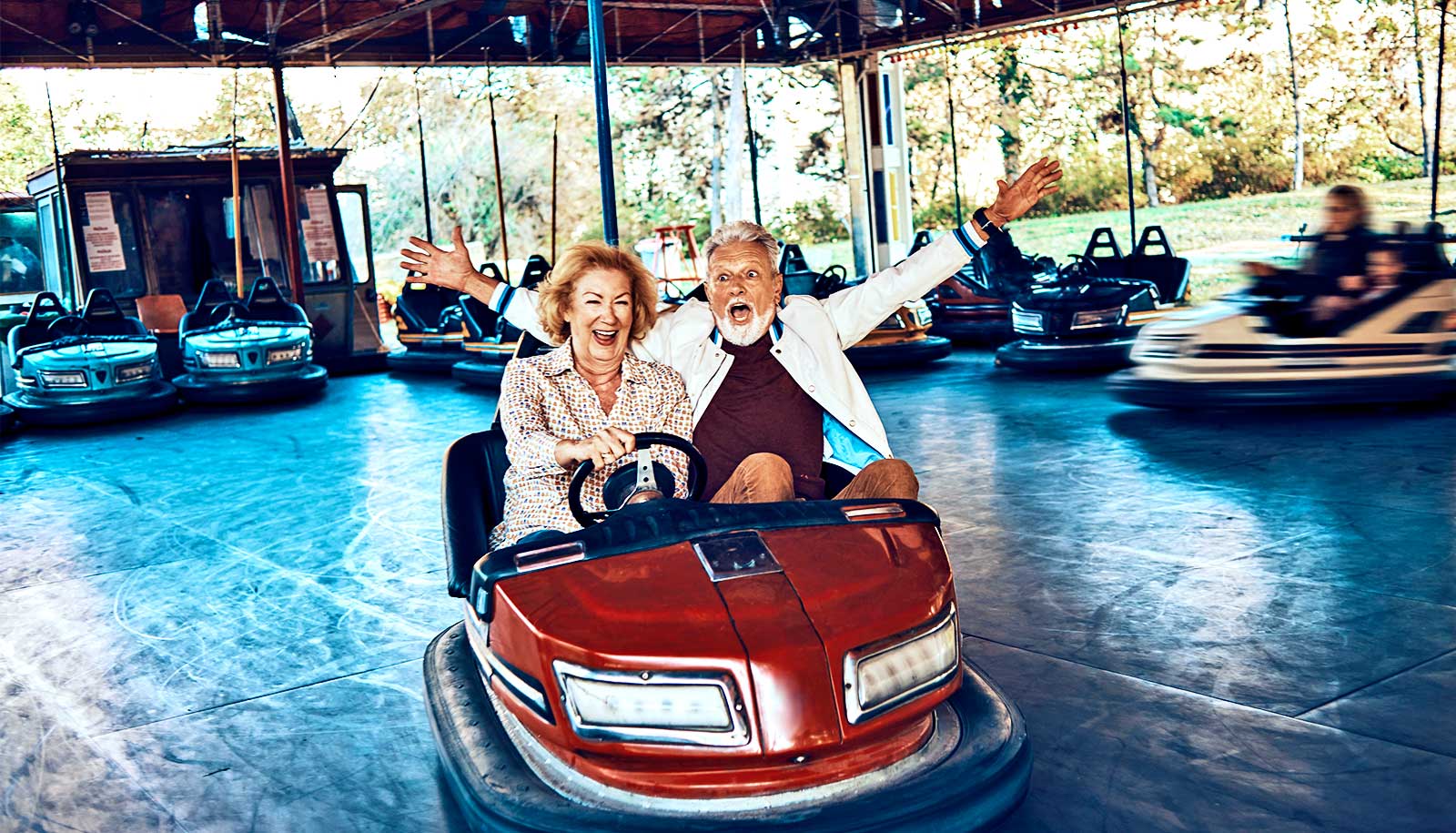
(Credit: Getty Images )
Poll: Pets add exercise, cut stress for older adults
More than 70% of older adults in fair or poor health said their pet helps them cope with physical or emotional symptoms.

Pets of all kinds help older adults cope with health issues, stay physically active, and connect with others, a poll shows.
In the poll, 55 percent of adults ages 50 to 80 said they have a pet—and more than half of those have more than one. More than three-quarters of pet owners said their animals reduce stress, and nearly as many said pets give them a sense of purpose. But 18 percent also said having a pet or pets puts a strain on their budget.
“Relationships with pets tend to be less complicated than those with humans…”
Two-thirds of all pet owners, and 78 percent of dog owners, said their pet helps them stay physically active, according to the new findings from the National Poll on Healthy Aging, which the University of Michigan Institute for Healthcare Policy and Innovation conducted.
For those who reported fair or poor health, pet ownership appeared to offer even more benefits. More than 70 percent of these older adults said their pet helps them cope with physical or emotional symptoms, and 46 percent said their pets help take their mind off of pain.
“We have long known that pets are a common and naturally occurring source of support,” says Cathleen Connell, a professor at the University of Michigan School of Public Health.
“Although the benefits of pets are significant, social connections and activities with friends and family are also key to quality of life across the lifespan. Helping older adults find low-cost ways to support pet ownership while not sacrificing other important relationships and priorities is an investment in overall mental and physical health.”
Exercise and companionship
The poll results indicate a need for physicians and other health care providers to ask older adults about the role of pets in their lives, says Preeti Malani, the poll’s director who has training in caring for older adults.
“…more assisted living facilities today are allowing residents to have pets.”
“More activity, through dog walking or other aspects of pet care, is almost always a good thing for older adults. But the risk of falls is real for many, and 6 percent of those in our poll said they had fallen or injured themselves due to a pet,” she says.
“At the same time, given the importance of pets to many people, the loss of a pet can deal a very real psychological blow that providers, family, and friends should be attuned to.”
“In recognition of these health benefits, more assisted living facilities today are allowing residents to have pets,” adds Alison Bryant, senior vice president of research for AARP.
Many poll respondents cited companionship and social connection as positive side effects of pet ownership. More than half said they owned a pet specifically to have a companion. A slightly higher percentage said their pets sleep in bed with them. And, 65 percent of pet owners said having a pet helps connect them to other people.
“Relationships with pets tend to be less complicated than those with humans, and pets are often a source of great enjoyment,” says Mary Janevic, an assistant research scientist who helped design the poll. “They also provide older adults with a sense of being needed and loved.”
Tied down
The poll also revealed some concerns about pet ownership. More than half of pet owners said that having a pet makes it difficult to travel or enjoy activities outside the home. And one in six said that they put their pet’s needs ahead of their own health needs—a figure that was closer to one in four among those with health issues.
“Later life is often a time when people have more freedom to travel, and a long list of things they want to do with their free time, and sometimes having a pet can get in the way,” Janevic says.
“For people living on a fixed income, expenses related to health care for pets, and especially pets that have chronic health issues, can be a struggle. Older adults can also develop health problems or disabilities that make pet care difficult.”
Pets? No, thanks
The 45 percent of older adults who said they don’t have pets gave a variety of reasons: 42 percent said they didn’t want to be tied down, 23 percent cited cost, 20 percent said they didn’t have time, and 16 percent said their own allergies or those of someone in the household kept them from having a pet.
For those who can’t own pets due to allergies, budget constraints, housing circumstances, or schedules, there’s often a need for volunteers at local animal shelters or pet-sitting for friends and family, the researchers say. They note that health care providers and family may even want to recommend these options to older adults who have no pets and wish to have one.
The results are based on responses from a nationally representative sample of 2,051 adults aged 50 to 80 who answered a wide range of questions online. Laptops and internet access were provided to poll respondents who did not already have them. The University of Michigan Institute for Healthcare Policy and Innovation conducted the poll. AARP and Michigan Medicine sponsored the work.
Source: University of Michigan
The post Poll: Pets add exercise, cut stress for older adults appeared first on Futurity.
Share this article:
This article uses material from the Futurity article, and is licenced under a CC BY-SA 4.0 International License. Images, videos and audio are available under their respective licenses.


